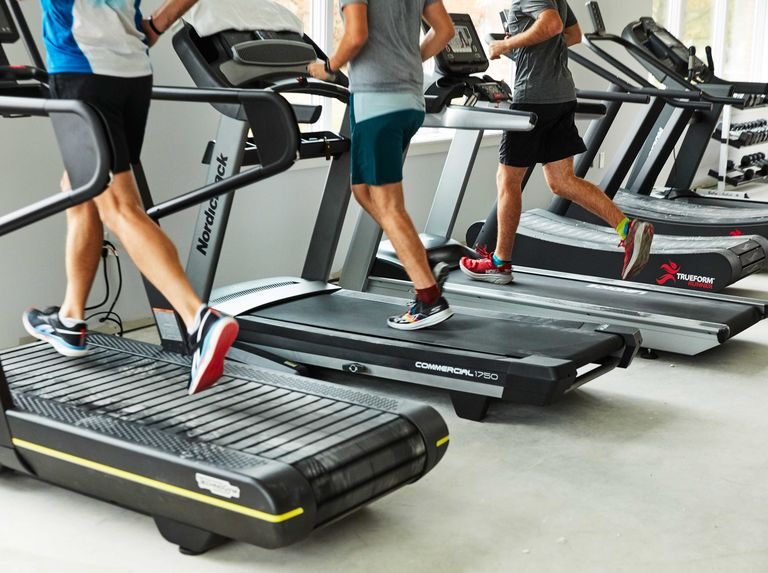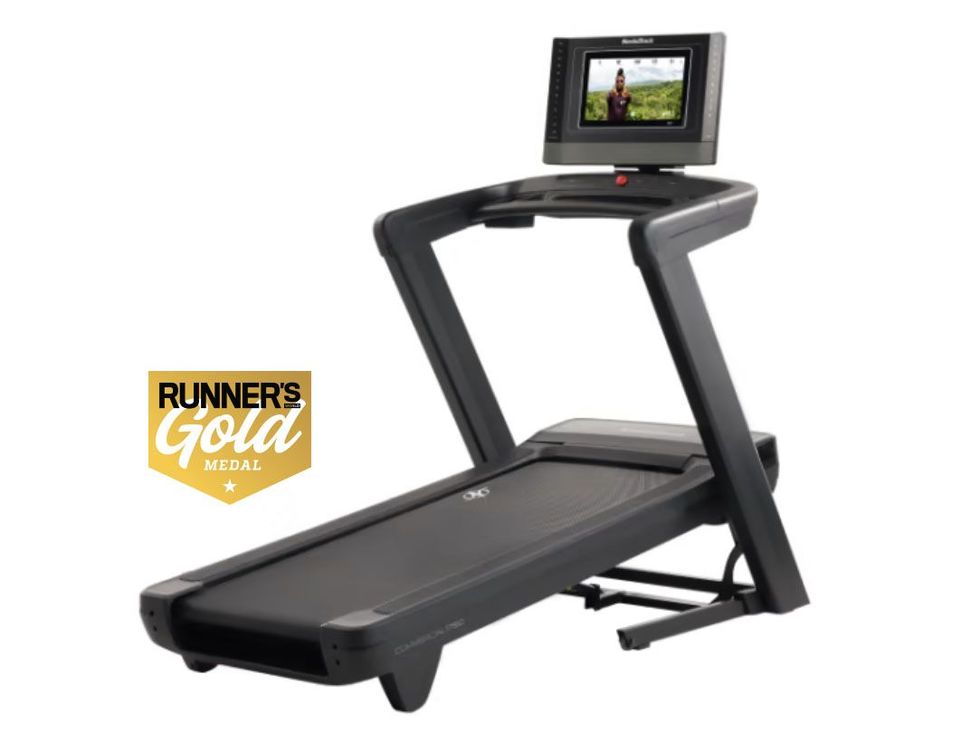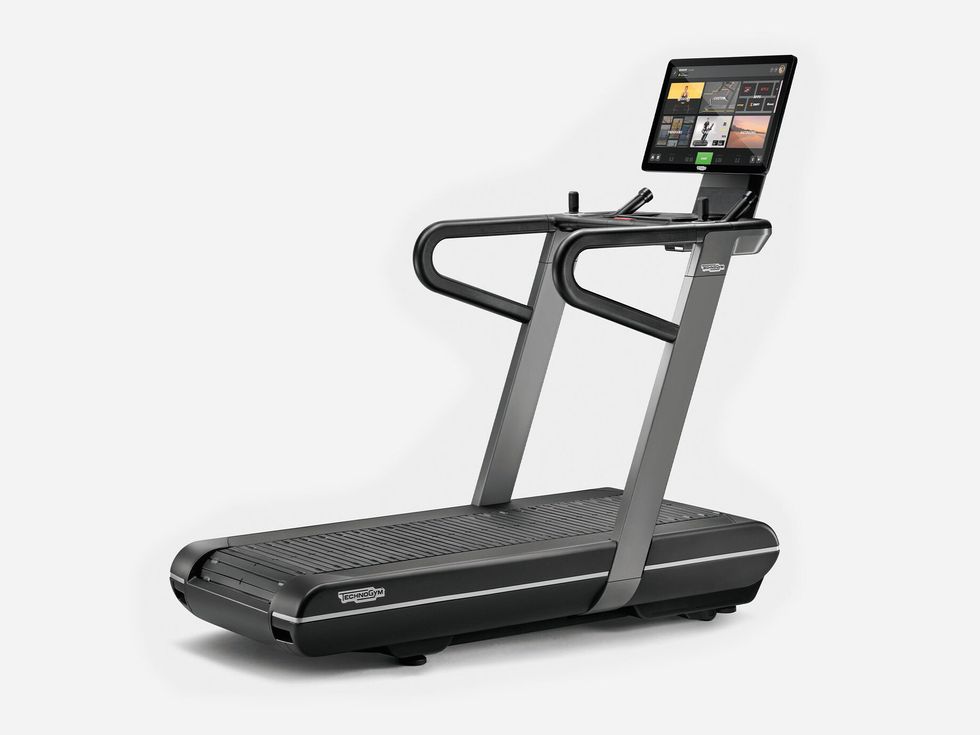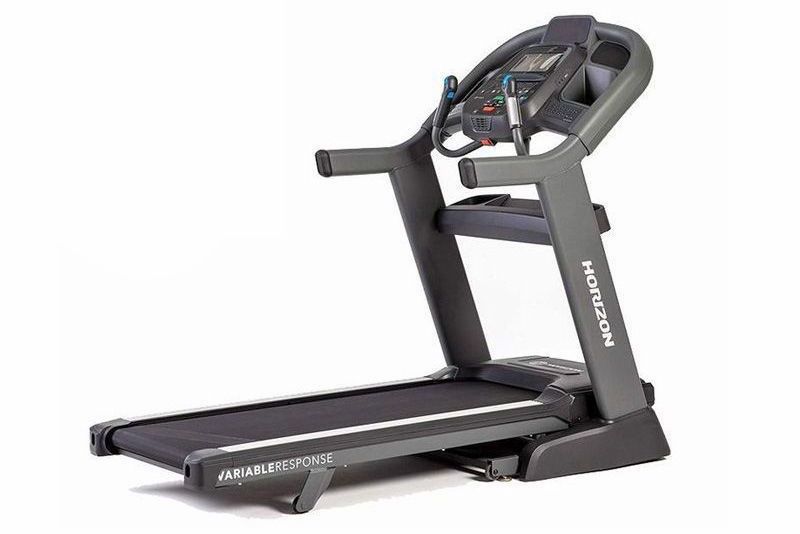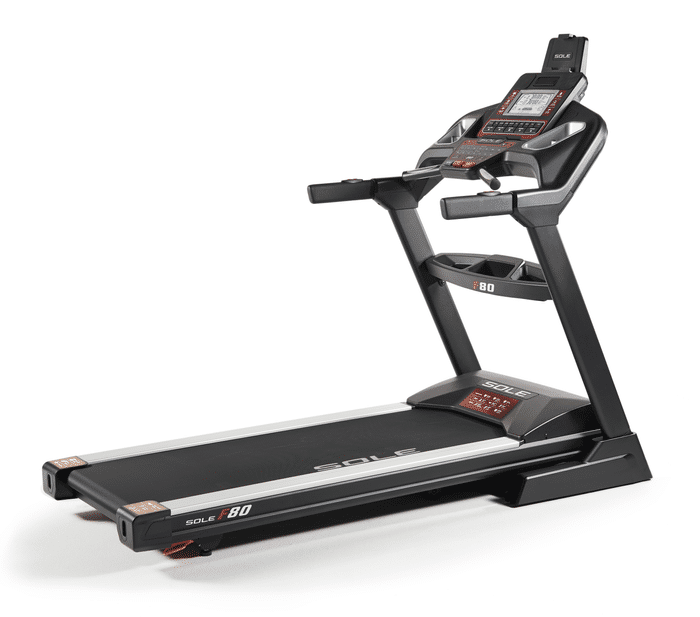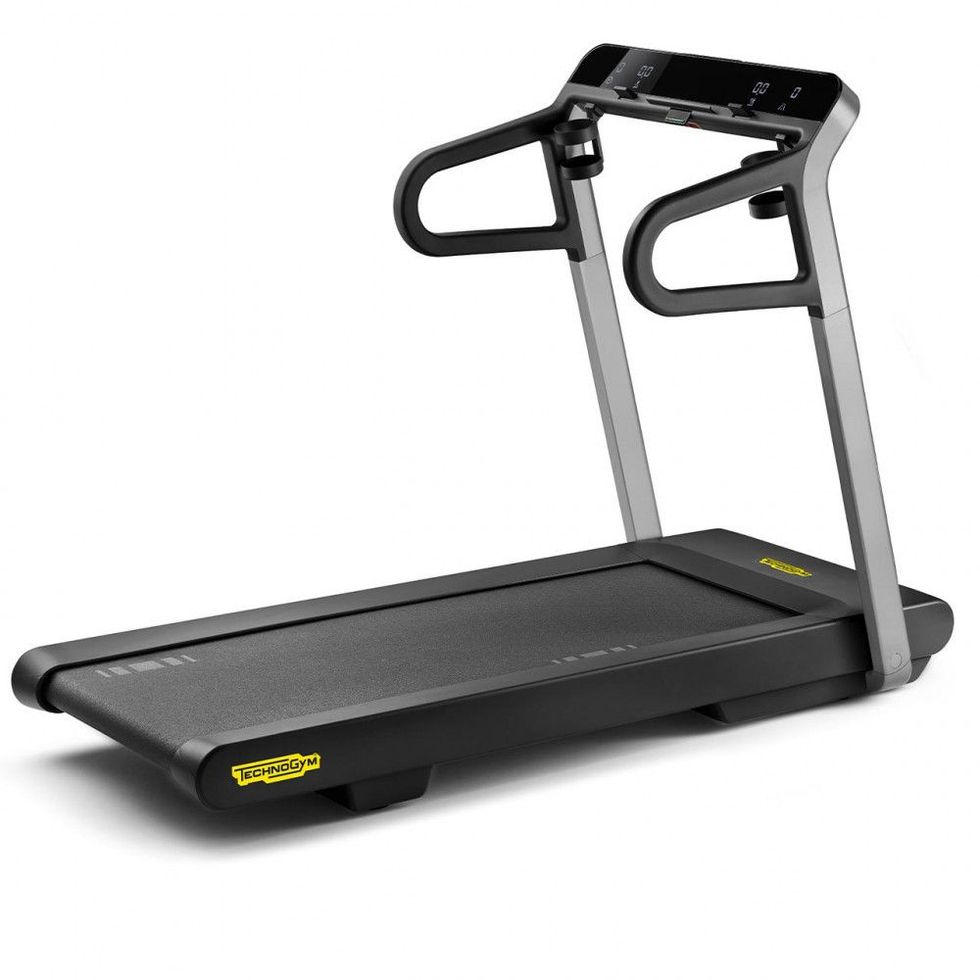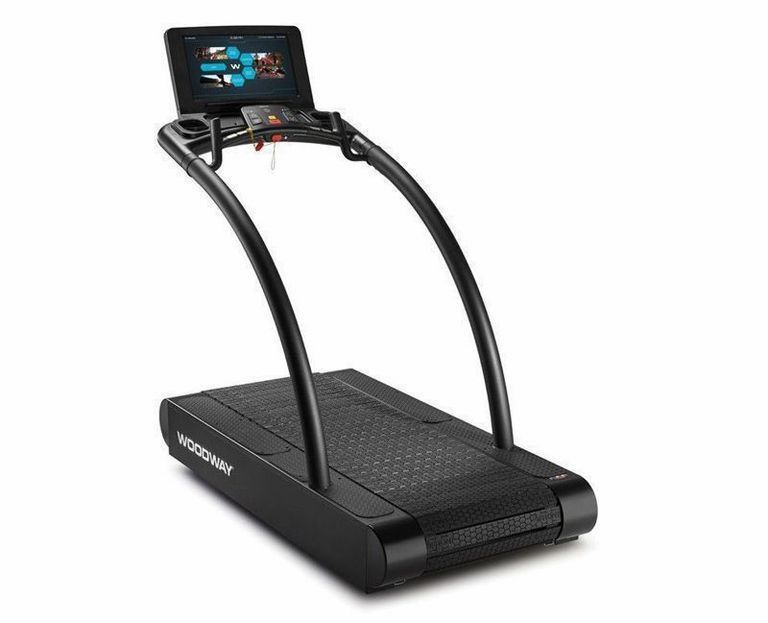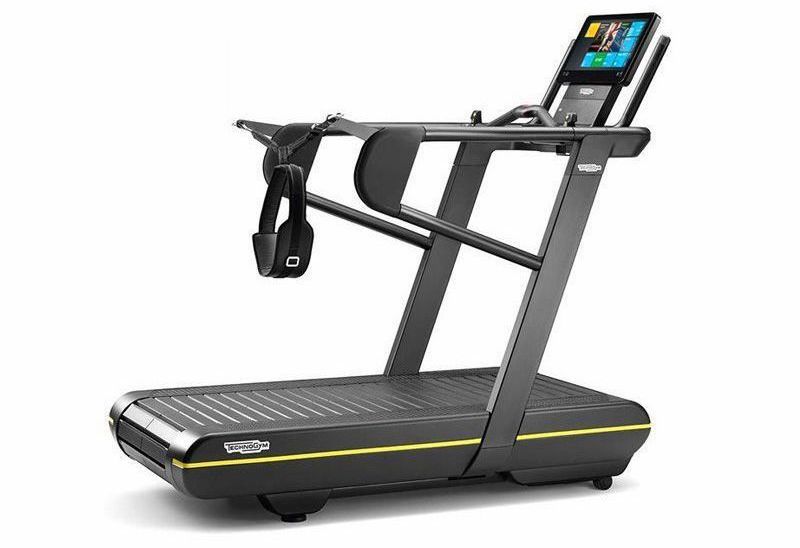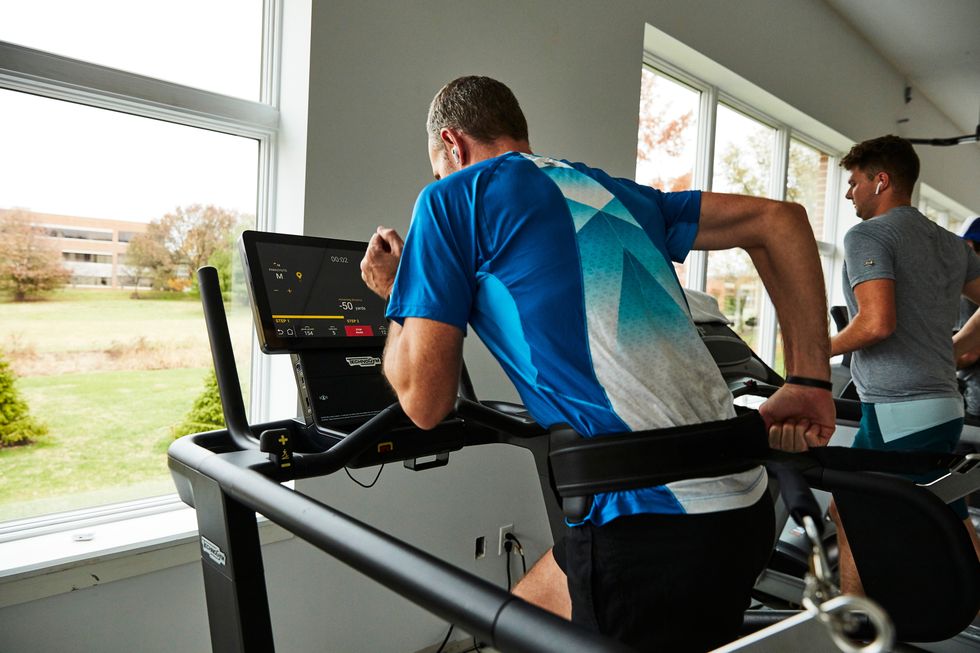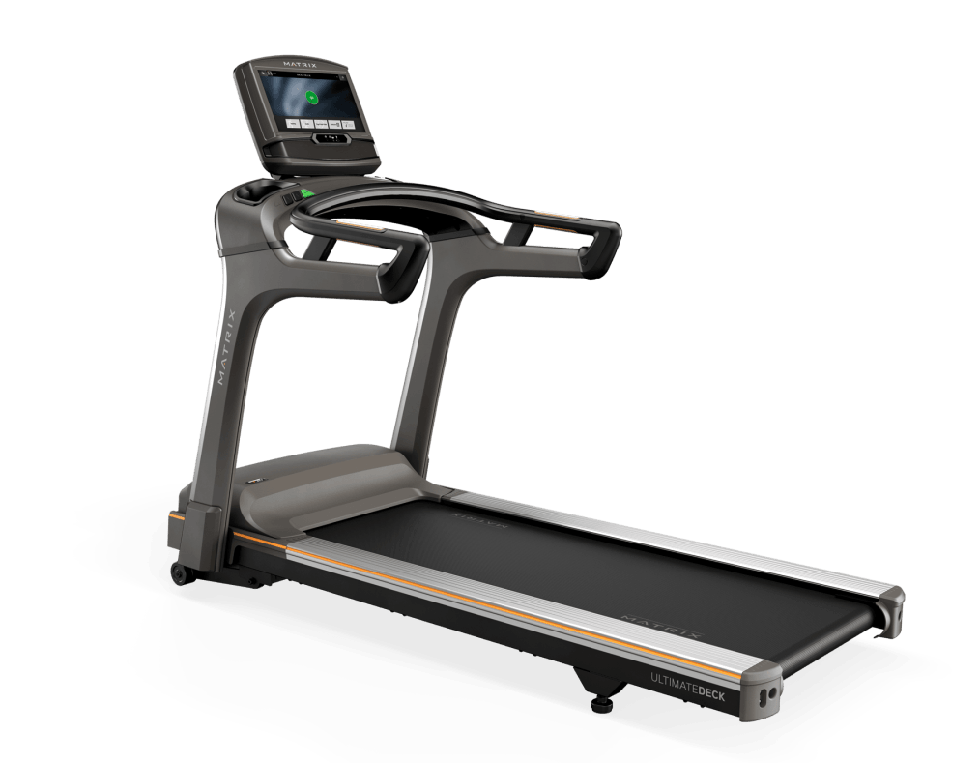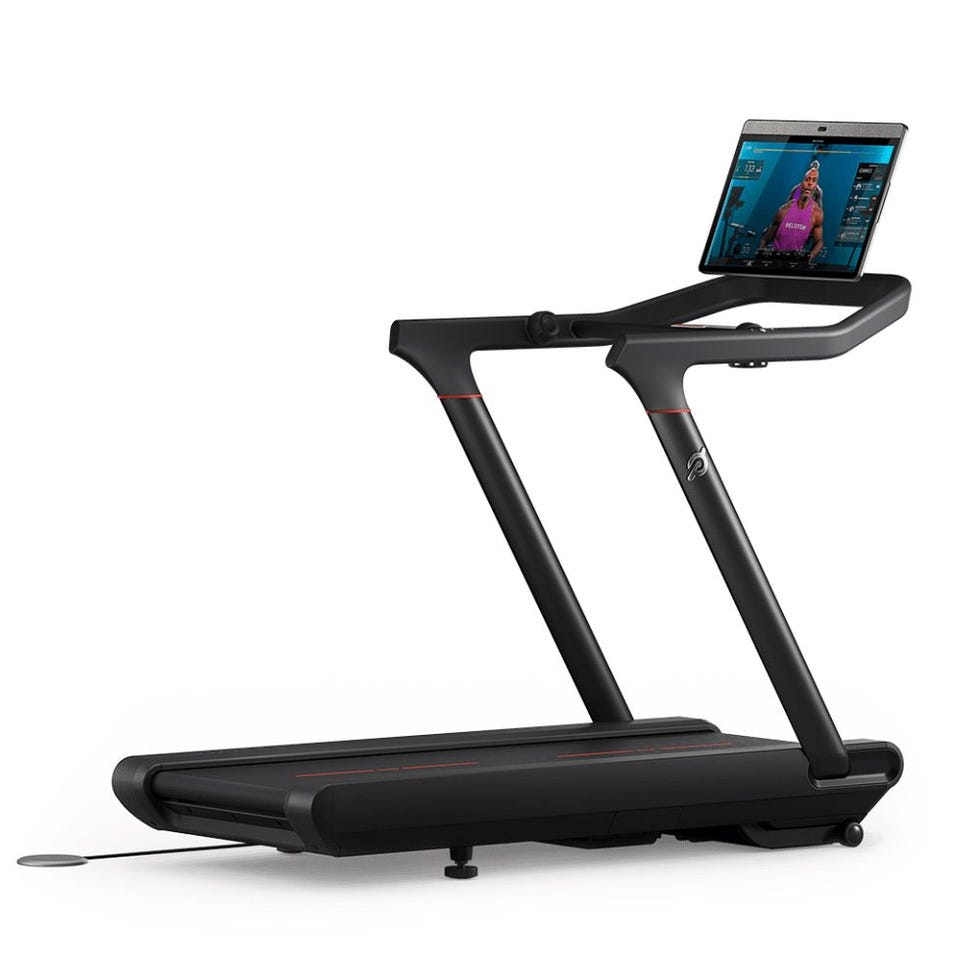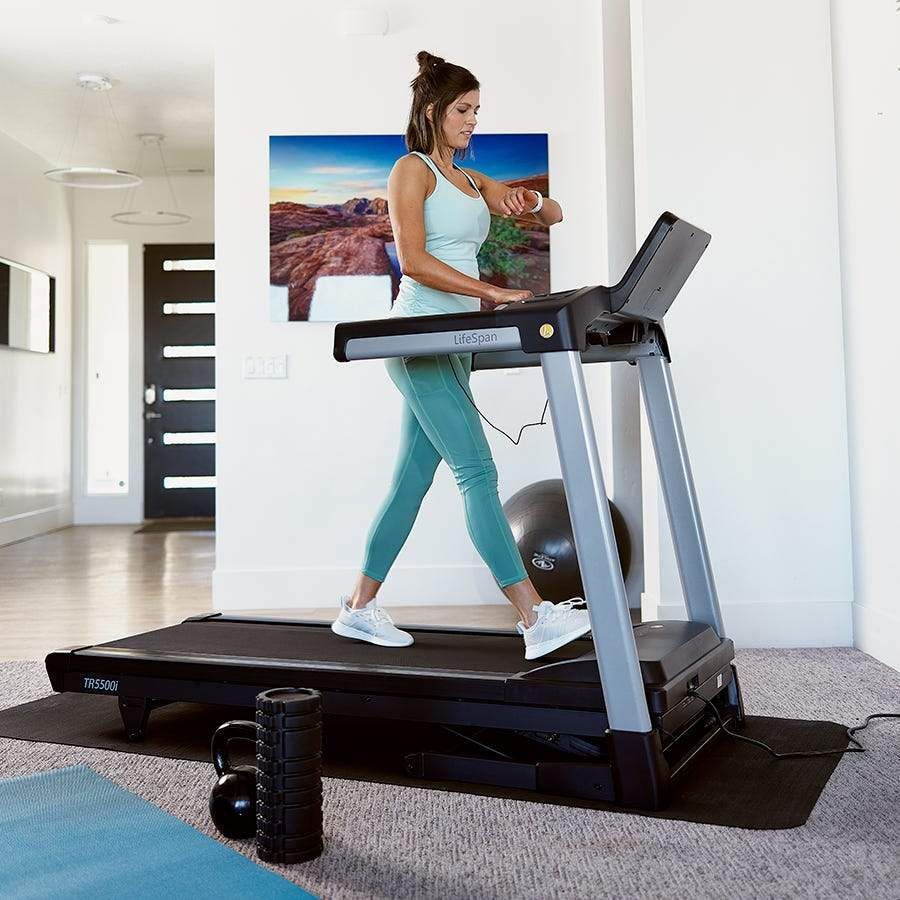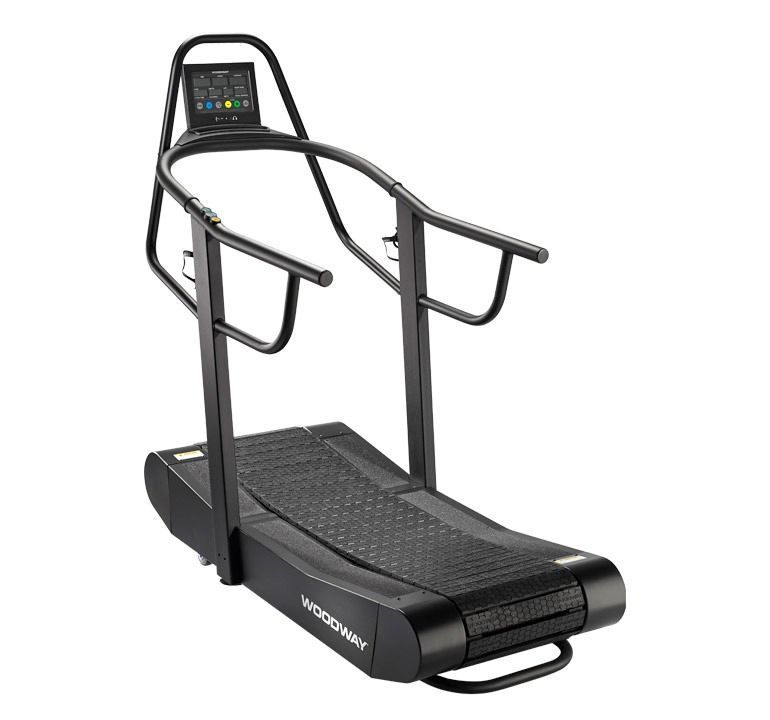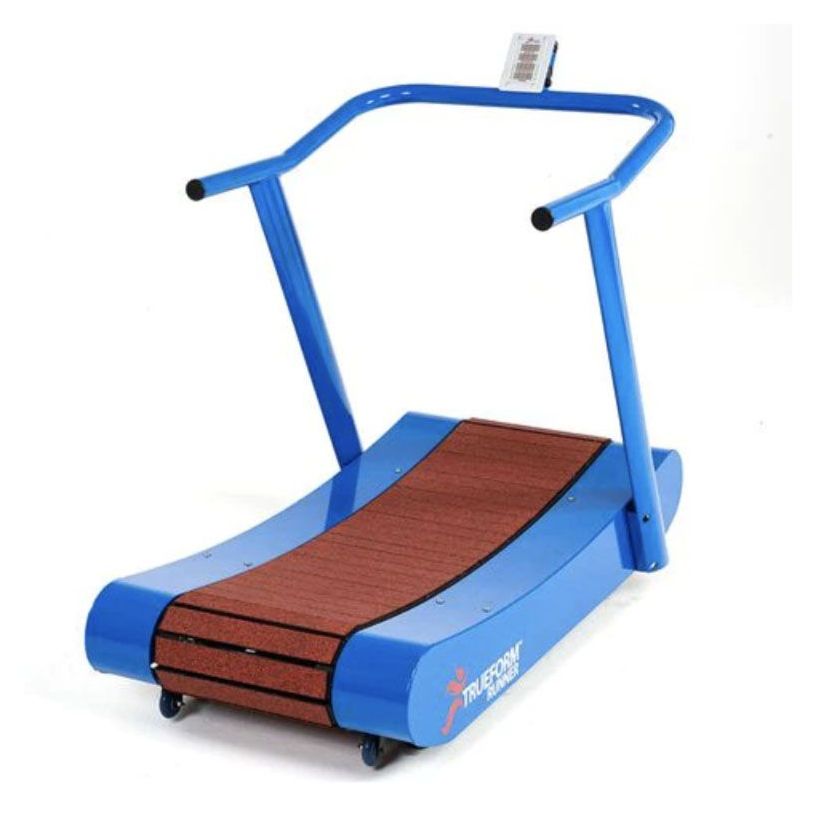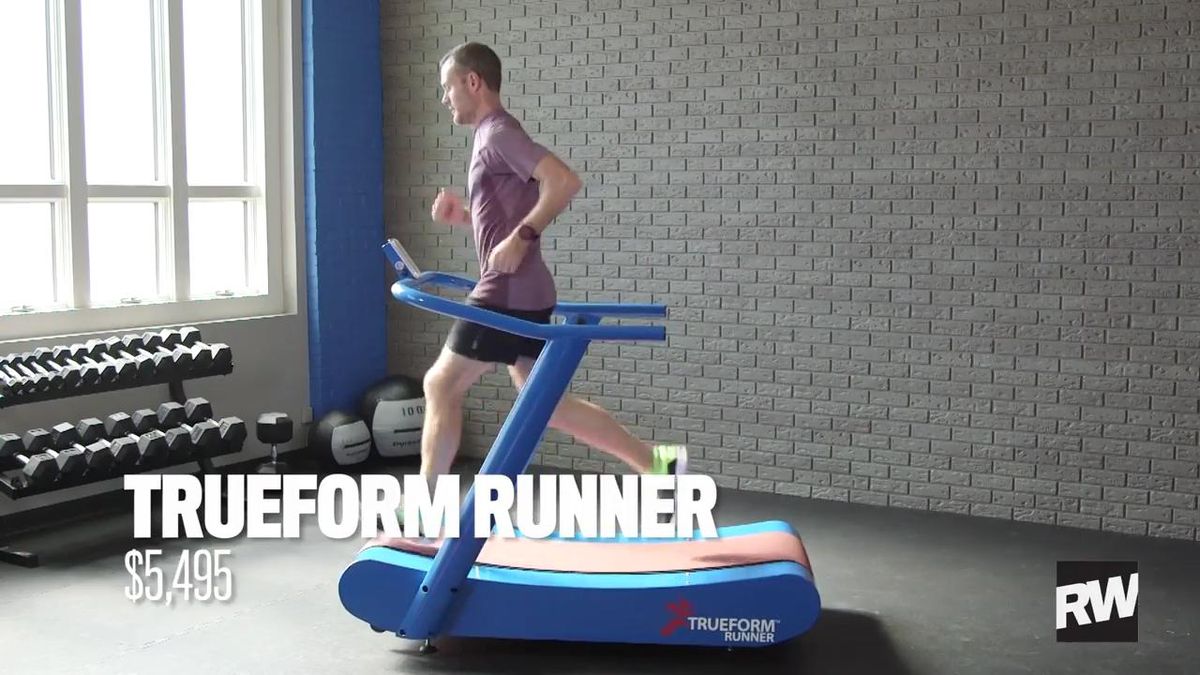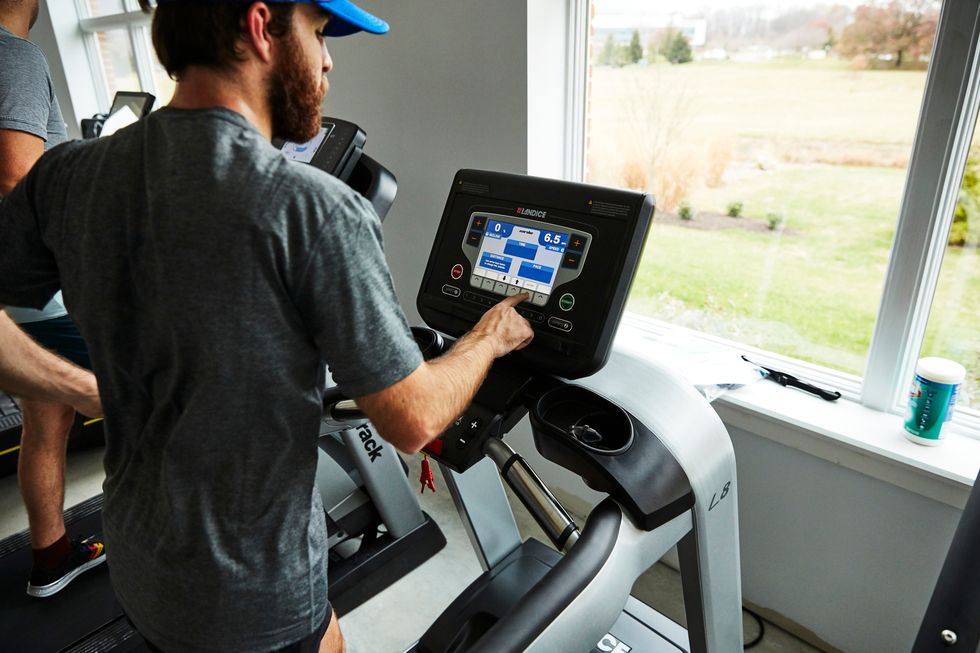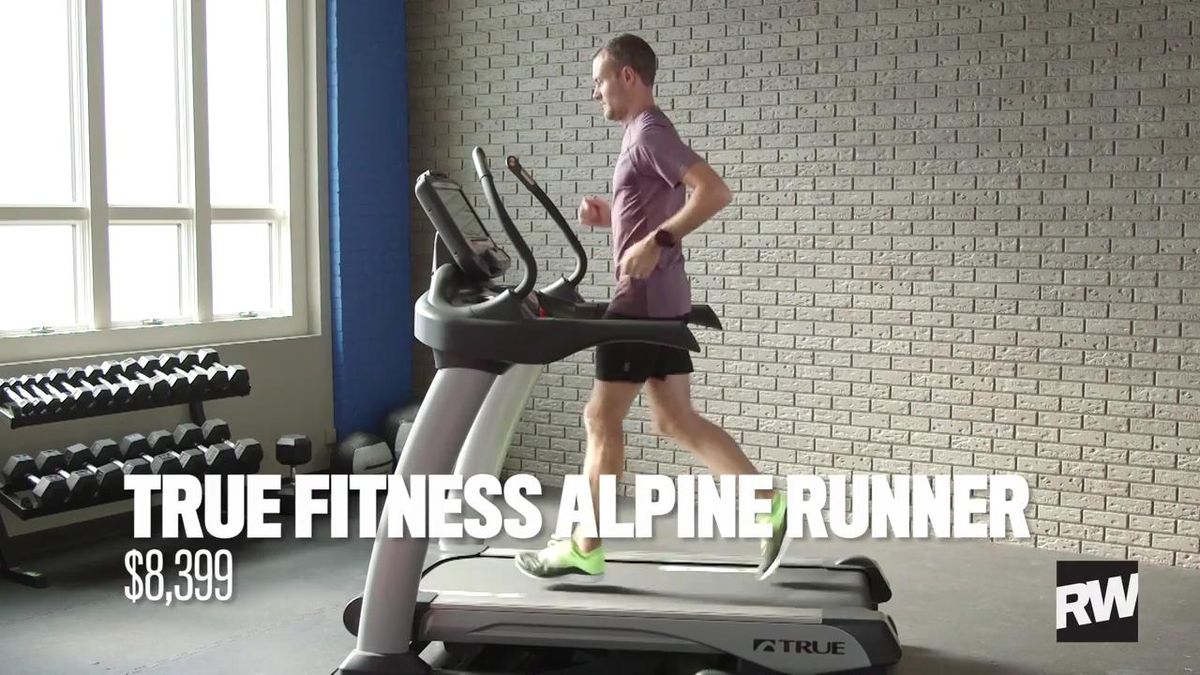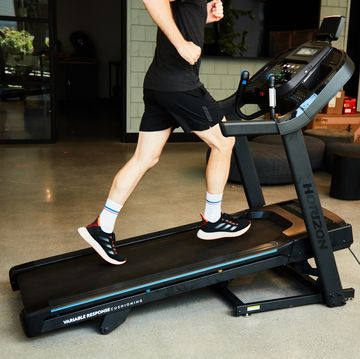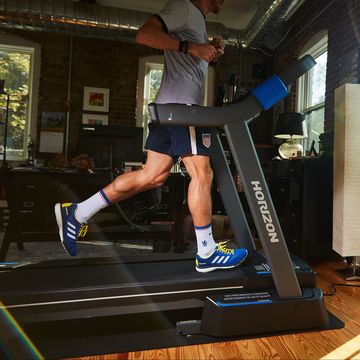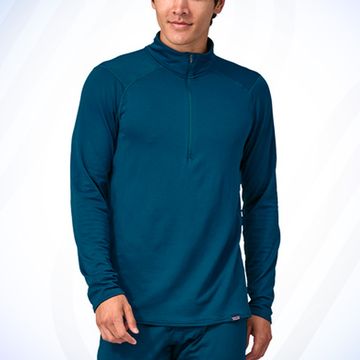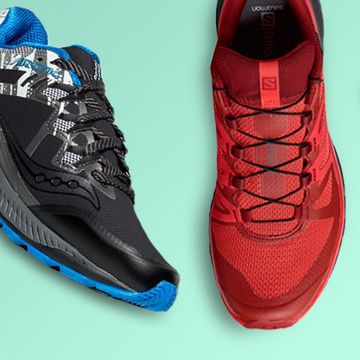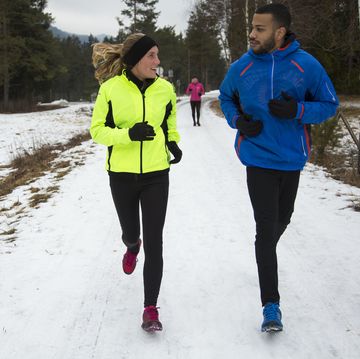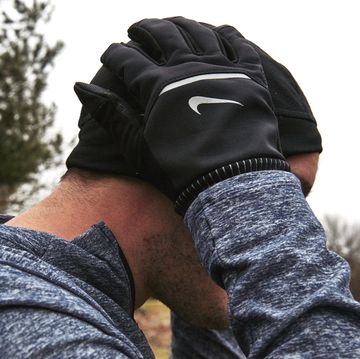Given the choice, we’d always prefer to get outside for a training run. But a bad storm that rolls in or a long workday that drags on can jeopardize your daily mileage. Or sometimes the convenience of a running treadmill just wins out. In those cases, it’s helpful to have a high-quality treadmill designed for running, packed with powerful training tools and cool interactive features, so you don’t end up with a “zero” in your training log.
The Best Advanced Treadmills We Tested
- For the Virtual Traveler: NordicTrack Commercial 1750 Treadmill
- Best Splurge HIIT Treadmill: Technogym Run HIIT Treadmill
- Best for Virtual Classes: Horizon Fitness 7.8 AT Treadmill
- Best for Runners Who Love Simplicity: Sole F80 Treadmill
- Best for the Basics: Technogym MyRun Treadmill
The Expert: Jeff Dengate has been a Runner's World editor since 2007 and has led shoes and gear testing since 2012. Over the last decade, he's tested dozens of treadmills at the RW offices, including the actual assembly and setup of the machines. After a mishap at a young age, which led to two skinned knees, Jeff has preferred to run outdoors, but frequently hits the treadmills for workout sessions or when the weather keeps him indoors. His favorite workout is to set the incline at 15 percent and see how far he can run in 15 minutes.
Our Advanced Treadmill Full Reviews
When it comes to bang for your buck, the 1750 has always been hard to beat. This treadmill has been updated with a fast, tilting 14-inch touch-screen console and a quiet incline motor that auto-adjusts during your workout. It still features all of the convenience options you find on NordicTrack machines—like quick keys to jump to a particular speed or incline with a single tap. “They let me adjust speed easily, instead of pounding the arrows and holding on for dear life at fast paces,” said test editor Amanda Furrer when we tested the previous generation 1750.
But you may not need those speed adjustment buttons thanks to the big touch screen and the ever-growing library of trainer-led workouts. The screen offers more than twice as much real estate as earlier models. We find it’s large enough to see the countryside in Germany, for example, where one tester virtually followed pro Lucy Bartholomew on a gentle trail run.
Underfoot, the 22-by-60-inch running surface is spacious enough for high-speed intervals, and the machine’s deck remains stable when you crank up the speed. The cushioning underfoot is just slightly bouncy, though it’s adjustable so you can make it a bit firmer, and the machine responds quickly to changes in speed and incline. The iFit training workouts are great but don’t let you adjust duration or intensity on the fly.
Technogym’s run and HIIT treadmill truly brings the gym—and world—to you with virtual environments, personal training, and bootcamp workouts, all richly seen on its 27-inch touch-screen display. The Slat Belt, which has raised nubs as a safety feature, is like the belt on a Woodway—only the treadmill operates like a traditional treadmill.
Runners who are reluctant gym rats can get a strength workout in with several programs, including speed intervals and floor exercises. The treadmill has handles and settings to simulate sled pushing. Bluetooth connectivity allows you to connect earbuds, heart rate devices, and your phone (you can check on your progress and do other activities, like meditation or create your own workout program, on the Technogym app). Fitness profiles, like Garmin and Strava, can also sync treadmill workouts.
News Editor Theo Kahler noted how quiet and soft the belt was as he tested. A major plus were the built-in sensors that allowed Kahler to review his personal metrics.
“The Technogym Run has a very smooth and soft—but responsive—surface,” he said. “There are plenty of app integrations and pairings with things like an Apple Watch or HR monitor. I loved all the high-end data, like power, cadence, stride length, etc. I feel like that kind of stuff is more accurate on a treadmill than a GPS watch. The display was very sharp too.”
A lot of treadmill makers offer custom training content, and in a way, lock you into their ecosystem. But Horizon is trainer-agnostic, even though it wants you to take advantage of the studio-class experience. Its goal with the 7.8 AT is to give you a machine that responds quickly to inputs and lets you choose whichever training program you want to stream—just bring your own iPad— there’s no way to display workouts on this mill’s console.
To let you keep up when the trainer says it’s time to sprint, the 7.8 AT has quick-access controls mounted chest-high. “The thumb dials to adjust speed and incline were great,” said one tester. “They were very easy to use and felt much more fluid than stabbing at buttons midrun.”
But those same dials are also extremely sensitive and you have to be careful you don’t make huge jumps in speed or incline. Plus, they’re easy to bump inadvertently as you’re running. Tip: Don’t run so close to the console—there’s plenty of belt behind you.
When you command the 7.8 AT to go faster or raise up, it adjusts quickly. Horizon says its “Rapid Sync Motor” responds 33% faster than other treadmill motors. The 7.8 AT reached top speed faster than most of the other models here when we accelerated from a recovery jog (6 mph) to speed-interval pace (10 mph). Though not as responsive as the Technogym Skillrun (below), it’s impressive for a machine that costs less than $3,000.
One little feature that was appreciated: music control buttons built into the console. When your phone is connected via Bluetooth, songs play through the treadmill’s speakers, and you can easily skip tracks without unlocking your phone or swiping the screen with sweaty fingers.
Though it has one of the smallest motors among the machines here and lacks the fancy touch screen you find on other models, the Sole F80 treadmill is still a serious training tool. The durable frame can support runners up to 375 pounds, so it’ll take any beating you can deliver. And the belt’s gentle bounce is soft underfoot, but not so much as to cause any stability issues. (The Sole F85 treadmill has a 4.0 HP motor and larger rollers for even better performance, though it costs more.)
A handy feature on the F80 is the rail-mounted buttons, which let you grip the rail and squeeze the speed and incline buttons with your thumb, rather than jabbing at the console when you’re running all out. If you need interactive coaching, the iPad holder lets you bring your own device. Or, just prop this machine up in front of a big screen TV and binge some Netflix on your long runs.
You won’t find a tidier looking treadmill nor such a compact machine. But make no mistake: The MyRun is built to handle your high-mileage training. If you’re looking for a no-frills treadmill that lets you turn it on and go, this is the one. It doesn’t have a built-in touch screen or console that locks you into an ecosystem. Rather, there are only speed and incline paddles, and corresponding digits on the display. That’s it.
But if you want to run along with something like Zwift, a built-in tablet holder lets you bring your own iPad. Underfoot, we found the surface to be comfortably firm without any perceptible bounce, even at faster speeds. The lone knock is that changes in speed and incline are slower than you'll get with almost anything else around. So, look elsewhere if you need to do a lot of interval training.
This tank has long been the gold standard at some of the best gyms around the country. Credit that to its rock-solid build; the 4Front is hefty. It uses a heavy-duty belt that resembles a driving track on construction vehicles, but delivers the most realistic road feel you’re going to find on any treadmill. The boardwalk-like slats flow smoothly underfoot, thanks to a ball-bearing design, and will last your entire running life.
Don’t be fooled by the big, modern entertainment system on the newest 4Front—this machine is still a serious training tool at its core. “I could have continued running on this for 7 miles—if I had a fan,” said test editor Amanda Furrer. “My steps were so quiet on the belt, and the transitions were smooth.”
There are no quick keys that allow you to jump from one speed to another, but you can program your workouts ahead of time and the machine adjusts speed and incline exceptionally quickly.
The big, 20-inch touch screen lets you stream video from services like Netflix, Hulu, or YouTube. You can also opt to run in “real” locations, like San Francisco, or virtual worlds. The only drawback is that there aren’t any speakers or fans, so you’ll need to supply your own.
Technogym machines are more commonly found in high-end gyms, but you could put one in your house if you’re truly committed to the sport. The Skillrun is much more than just a treadmill. Sure, it’ll do the basics—hit start and go—but this mill is designed to maximize power and performance. For starters, during your running workouts, a “Biofeedback” screen shows you data about how you’re moving with metrics like stride length, ground contact time, left-right balance, and even your running power measured in watts. Such info can help you identify imbalances in your stride and work on your form, which may help prevent injury.
And since you’re going to be doing some high-performance training on this machine, it’s built to handle the abuse. The frame weighs a ton—figuratively, but it did take four men to deliver it to our office—and it doesn’t budge when you’re at a full-out sprint. The belt, made of slats, rolls smoothly underfoot and gives you plenty of space to really lengthen your stride. Plus, the 10-horsepower motor can crank, making speed changes faster than on virtually any other machine we’ve tested. If you’re committed to doing intervals on a treadmill, this rig is for you.
You can also use the Skillrun to build functional strength. It has the ability to add resistance to the belt so you can simulate sled pushes and parachute training. At the heaviest setting, the 300-plus-pound “sled” didn’t budge for our skinny distance runners. But you can dial the resistance down all the way to 11 pounds, then choose the distance you’ll push and the number of reps. Likewise, for parachute training, you can select the resistance—basically, the size of your parachute—and strap a waist belt to the machine’s arms. The Skillrun gradually adds resistance as you push farther and faster. After a set of parachute drills and sled pushes, we had sore hamstrings and glutes for a couple of days.
Unlike Peloton and NordicTrack machines, which lock you into their own training ecosystems—both jam-packed with workouts—Bodycraft allows you to bring your own platform. Want to run in a Zwift virtual world? The T800 lets you do that. Want to binge Cobra Kai during your long run? You can do that, too, with Netflix—plus Hulu and YouTube—pre-loaded on the machine. It even has an HDMI port, which one staff member used to hook up Apple TV while testing the treadmill in his garage.
When streaming, the monitor hides metrics like distance and time, so you can blissfully zone out without watching every second and hundredth of a mile endlessly tick by. If you want to keep it simple, leverage the machine’s 30 built-in training programs and its firm, bounce-free platform. Our testers also liked that the T800 makes it easy to quickly draw your own workouts: Just drag your finger along the speed and incline charts on the touch-screen display to add hills and speed surges.
The T75 is sturdy—like machines from Woodway and Precor here—but it lacks the ability to adjust cushioning. The heavy steel frame is steady and doesn’t bounce, even when pushing the pace or under heavy footfalls. It boasts a 1-inch-thick deck and is rated for runners up to 400 pounds. “Lower-quality treadmills really shake for me when running at high speeds, but this one is smooth and quiet,” noted our tester who put in more than 20 training runs ranging from 7:45 to 8:45 pace.
This Matrix marries that robust build with a slew of entertainment options, which is rare, even among higher-priced treadmills. It comes with Spotify built into the console and speakers that sound great, an uncommon audio perk on noisy equipment.
You can choose from three consoles—the top-of-the-line XIR has a 16-inch touch screen, the best for watching Netflix. The XIR also displays scenic destinations to watch while you run, and the video playback speeds up and slows down to match your pace on the belt. Worth noting: The motor is smaller than you'll find on most in its class, but we didn’t experience any issues.
Peloton’s first treadmill was called “Tread.” Then it launched this more compact, more affordable model, named it “Tread,” and renamed the other model to “Tread+.” Sale of the Tread+ (reviewed below) is currently on hold because of safety issues including a fatal accident involving a child. This machine isn’t impacted because its design uses a shorter, more standard treadmill belt rather than the smooth rolling slats (similar to those on Woodway machines) found on the Tread+.
We had the Tread set up in the home of one New Jersey-based tester during the summer and he found the Tread to run impressively smooth. “It’s not a Woodway or a commercial treadmill, but I’ve run on many home treadmills and this ranks among the best I’ve used.”
With Peloton’s unique rail-mounted dials, it’s easy to make changes in speed and incline quickly. Its slightly smaller—though still fairly large—23.8-inch touch screen (the Tread+ features a 32-inch screen) makes studio classes immersive, but our tester found it stopped responding to wet fingers when he was sweating heavily.
The new Commercial 2450 is an update to the machine that we’ve loved for many years. Aside from its more modern angles and Z-shaped frame, the 22-inch touch screen tilts and pivots. And the deck makes quicker adjustments to speed and incline than earlier generations.
Our testers loved the enormous 22-inch touch-screen display on the 2450. It offers a broad range of coaching options. “It actually kept me engaged in the running rather than droning music and TV,” said Pat Heine, Runner’s World senior video producer and ultrarunner. “The trail climb I did had a lot of speed and incline variation that felt natural.”
To accomplish that, the treadmill taps into the iFit programming platform, where you can get video lessons from coaches and elite runners. A guided run through Patagonia leads you along scenic trails, while the machine automatically adjusts the incline and speed to make the experience feel realistic. Is it? Well, no. But the large display helps you forget that you’re stuck in your basement. We just wish you could use it to stream Netflix, too.
The TR5500i has been updated with a 10-inch touch-screen console, but still has the plain-Jane look that we’ve long loved and the small stance that won’t take up much space in your basement. The refreshed console is a nice upgrade, even if it doesn’t bring you live coaching or Google Streets views, because it’s so easy to use.
When you’re preprogramming a workout, you can simply slide bars on a chart up or down to adjust the speed and incline for each segment. That console also sits quite low—taller testers had to look down more while running on this LifeSpan than they did on other machines. However, we like that the lower console would be out of the way if you were watching a TV.
Though the TR5500i is a bit slow to respond to speed changes, it’s on par with treadmills in this price range and can go as fast as 13.5 mph, which isn’t typical for a lower-priced model. And when you’re really cranking along at your top speed, there’s a slight bounce in the deck to help cushion your stride.
Get ready to sweat. This curved treadmill doesn’t have a motor—you power the belt with every stride. It takes some time to get used to, as you have to engage the muscles in your glutes and hamstrings to keep the belt moving smoothly. But once you get the hang of it, you can accelerate quickly for high-speed interval workouts.
Mounted on the left handrail are plus and minus buttons that let you dial in 20 levels of resistance. At the toughest setting, you’ll need to be a sled-drill-loving linebacker to get the belt to budge; at the lowest, the belt spins more easily, but distance runners might still find it too taxing for their easy days. Set it somewhere in between for HIIT workouts.
The entertainment options are the same as on the 4Front. You can watch videos from Netflix, Hulu, and YouTube or surf the Internet. Though given that the Curve has just a 10-inch display, you might be better off setting up a separate television for your viewing.
The TrueForm Track looks much like the Woodway Curve, and is powered the same way—you are the motor that drives the belt by engaging your backside muscles. It’s hand-built in the U.S. with a rock-solid frame and realistic running surface that lasts far longer than a typical treadmill belt. Plus, with no motor or electrical components, there are fewer parts to wear down over the life of the machine.
We tested the previous iteration, the TrueForm Runner. The TrueForm Track is basically the Runner with a name that reflects its intended use, its belt allowing us to train wearing spikes. TrueForm also has the Tread with a rubberized belt and the Turf with a turf surface (football and soccer players can warm up in cleats rather than by pedaling a bike). Just stay focused—the 17-inch running surface is the narrowest of the models we tested.
If you’ll be spending any considerable amount of time on your treadmill—or if you have multiple family members who will use it for training—a higher-quality option will suit you. Larger (and more durable) motors, sturdier frames, and advanced tech will better withstand the abuse that running inflicts on a treadmill. That kind of quality running treadmill, with added programming and interactive features, can set you back a few thousand dollars, but the investment will pay dividends for many years as you bank miles and workouts you might have otherwise skipped.
That said, if you are on a tighter budget, or plan to use your treadmill only occasionally for shorter runs, check out our guide to the best entry level treadmills for runners and walkers here. Our experts reviewed seven of the top options under $2,000 that you can actually buy now.
What Makes a Great Running Treadmill?
These are a few of the key features you should keep in mind as you shop for a machine that can last for many years of high-mileage training.
- Belt size: For faster running speeds, you need a longer belt to accommodate your longer strides. Look for a treadmill that has a belt at least 60 inches long. You’ll also appreciate a few extra inches of width—it’s hard to hold a perfectly straight line when you’re sprinting. A few of the options here have belts narrower than 20-inches, but most are at least that wide, which we feel is optimal for runner comfort.
- Belt type: Woodway has long been a top performer in our tests thanks to its boardwalk-style belt. The rolling slats provide a firm, road-like sensation underfoot, which feels more natural than a belt that drags between your foot and a platform. Other brands like Technogym, Peloton, and TrueForm Runner all use similar construction on some of their machines.
- Interactive features: Connected fitness has exploded in recent years. Peloton gets a lot of hype because of its star-studded lineup of coaches and trainers. But a great training alternative is iFit, which you’ll find on NordicTrack, Pro-Form, and, now, Matrix treadmills. iFit offers similar interactive studio-style classes along with engaging training runs. But choose your platform wisely: You’re locked into Peloton’s ecosystem, whereas you can use iFit on a tablet with other brands’ machines.
- Speed and incline: All of the treadmills here let you run at 12 mph or faster. That’s a 5-minute mile, which is quicker than most non-elite runners will ever go, even during interval sessions. Incline, however, is another area that deserves attention. If you want to replicate hilly races, look for a treadmill that can raise to grades as steep as 15%, but also one that rises quickly and smoothly. The faster and smoother it changes incline, the more realistic it’s going to feel during your run.
How We Tested
We put 38 advanced treadmills through their paces in the RW Test Zone to find the top performers based on their quality, features, and reliability. We researched the market, spoke with product managers and engineers, and used our own experience to determine the best options.
Our test editors and staff also set available models in our homes so we could live with and use them full-time, just as you will when you purchase one. We’ve done easy runs while listening to music, long runs watching movies, and even speed workouts to assess the machines’ interactive and studio-class functions.
Whether you’re upgrading an older version or searching for your first serious piece of equipment, one of these treadmills will suit your needs. (And once you have your new mill, check out these great workouts to help you increase speed and build strength.)
..
Jeff is Runner-in-Chief for Runner's World, guiding the brand's shoes and gear coverage. A true shoe dog, he's spent more than a decade testing and reviewing shoes. In 2017, he ran in 285 different pairs of shoes, including a streak of 257 days wearing a different model.
